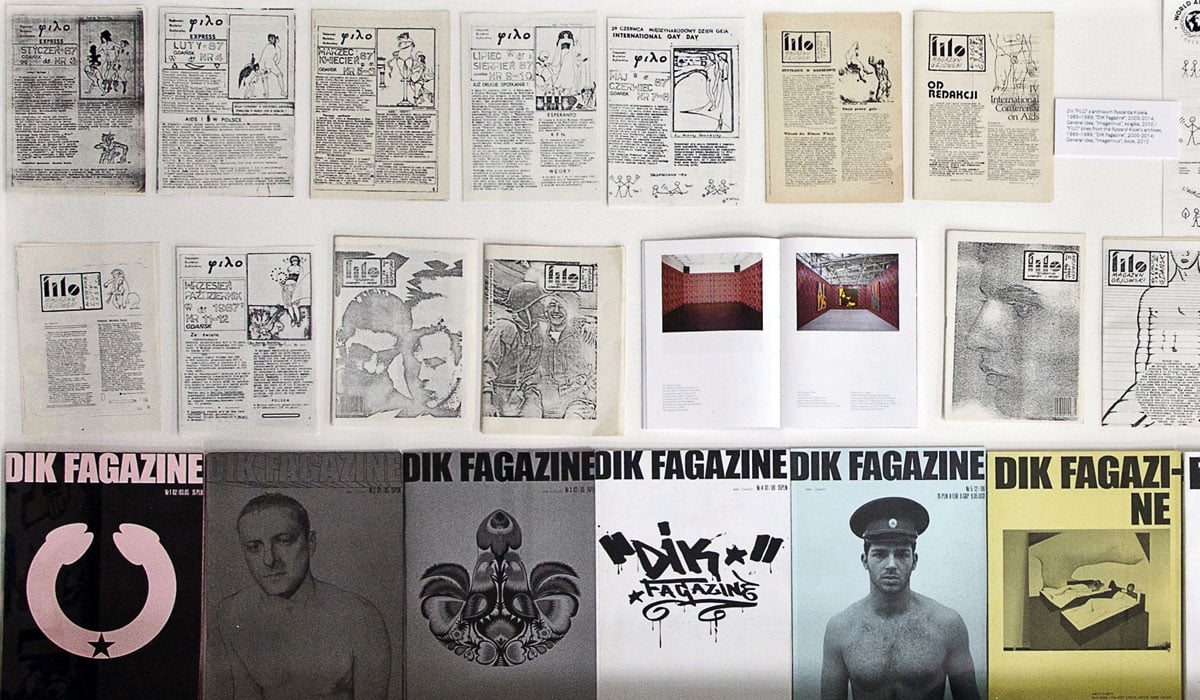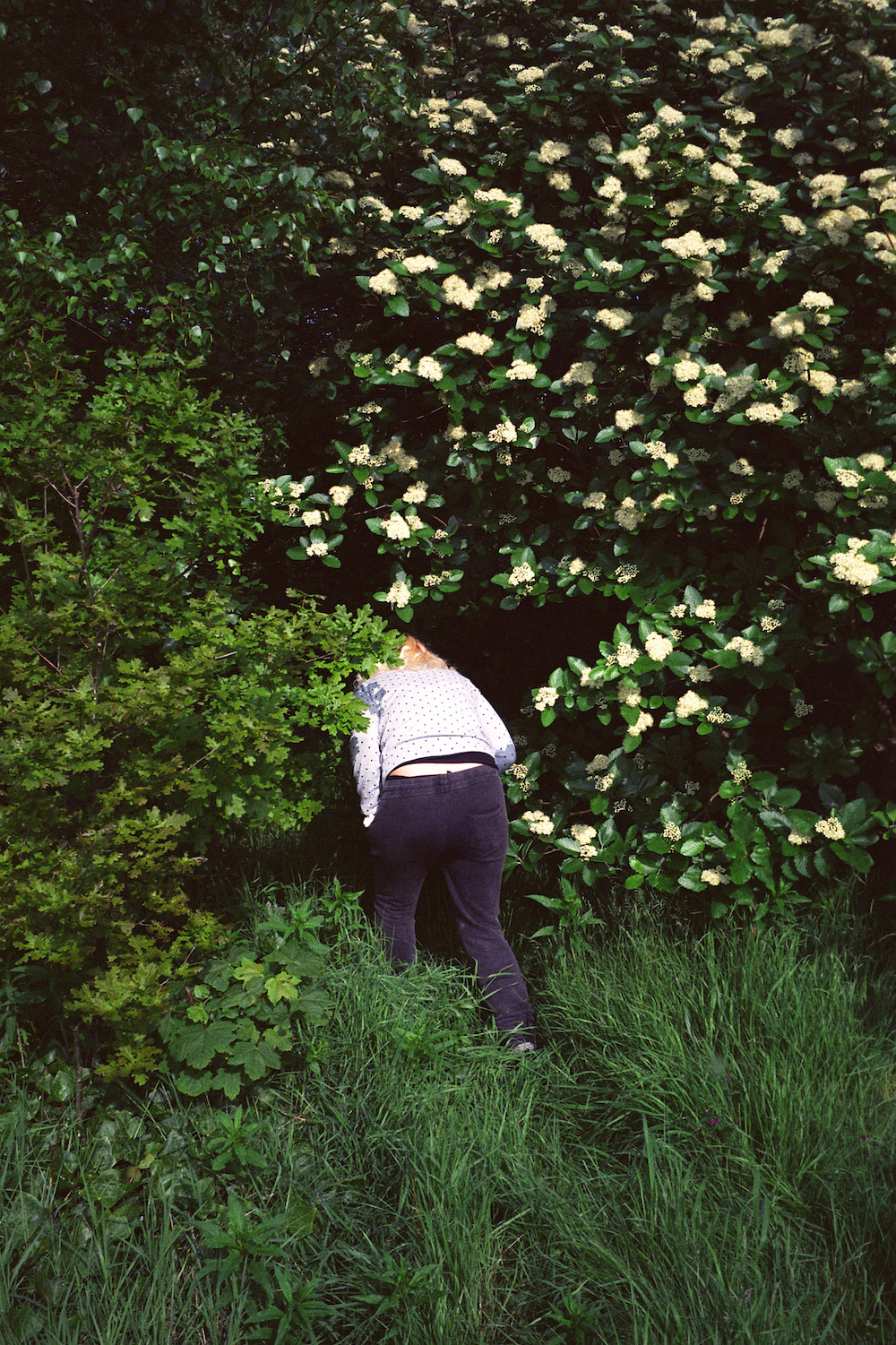Photo diary: what I learned after coming out in noughties Poland
Growing up in a small Polish town in the early 1990s, located in the industrial Lower Silesia region, photographer Agata Kalinowska could never shake off the feeling of being different. The internet and a relocation to Wrocław had introduced her to LGBTQ clubs and queer friends, and she began documenting her personal journey with an Olympus Mju point-and-shoot film camera. Her series SCVM (pronounced “scum”), which she plans to publish as a book, is a raw and unapologetic photo diary that reminisces on the love, friendships and loss that defined her twenties.
The day I came out was an intense family experience. I was 22. My devastated father spent the rest of the night smoking two packs of cigarretes and quoting Oscar Wilde, not knowing he was a fag; my stepmother cried over the family dishonour. I was still very inhibited back then — I definitely wasn’t the activist, Pussy Riot type — but I grew tired of hiding. After I came out to my family, I came out to everyone. It was such a relief, really. For a long time there wasn’t even language for gay people in Poland, not to mention sex ed. It was much easier to look at two male dogs engaging in joyful intercourse next to the garden tomatoes, but people — no way. Have you ever heard of the “gender monster”? We’ve got that here and it scares the shit out of children in some households. And it all started with litigious right wing politicians a few years back.
“Polish Pride marches are much more political and aggressive, we have to fight for our political rights”
The best thing that happened to the LGBTQ community was the internet. In Świdnica, a town of around 60,000 inhabitants in southwestern Poland where we lived, there was no LGBTQ community, at least not openly. We would recognise each other in school corridors, on the streets, in basketball classes, but nobody really spoke about it. At school, a lesbian kissing was considered a way to tease boys — not a real thing. But when websites like “women for women” or “the other side” appeared, a community started to form online. Around that time I left my home town and moved to Wrocław to study. All of my online dates were disastrous, but through the parties, university lectures and KPH (the first pro-LGBTQ organisation in Poland) I started to make new friends and eventually it felt like being part of a community, something bigger than what was a shameful, lonesome experience for many.
Most of the time there was only one club where you could go dancing; in better times, two. The most famous one was called H2O. Today it no longer exists, but back then it was so hidden that even when you went there a second or third time sometimes you’d have trouble finding it. I remember the huge, gorilla-like, heterosexual bouncers at the door. It was all self-indulgence, sweat, lust and sex in dark rooms, as if people were trying to compensate for their lack of visibility in public places. Now we’ve got HAH Club: it’s a chain, very luxurious, colourful and mainstream compared to the old places. But we also had UFF for a year, and that place was so peculiar that it gave the community a place to develop its potential. I think the reason why many so LGBTQ clubs and bars have closed down over the years is because we have so much more visibility nowadays and that we don’t have to hide anymore. Tinder and other online platforms have replaced LGBTQ clubs as a way to meet people. I work in a bar that’s not an LBGTQ venue but we still get a lot gay customers.
In 2006, I spent a summer in Manchester, working at a cookie factory. I went to Pride there and the experience was monumental. British Prides are more of a celebration: colourful and diverse, representing all genders, giving queer people a platform to shine and be visible. Polish Pride marches are much more political and aggressive, we have to fight for our political rights in the presence of quasi-Nazi groups, who are screaming their famous line, “Who doesn’t jump is a fag” while jumping like frogs doused with acid.
I started my Relatively Human blog in 2008 as a way to talk to girls. I was too shy to flirt and would end up embarrassing myself but this way I could excuse all that by saying I was an artist. It was a half-truth, really. The blog was rubbish in the beginning but I kept all those embarrassing photos to show that it takes time to learn. I like the fact that it is not just selection of my best work but a chronological marker of time, not so processed by my ego. It’s a story about time passing and people changing, and I can really see when some of my relationships with people ended because they stopped appearing in my photos.
The book was always in the back of my mind but I had be ready to make it. Most of these photos were taken over four years in Wrocław, but a few are older: some in gay bars, some at different flats I used to live in. There are some images of grape picking in France and others taken during the year I spent in Sheffield. I think the photos of the block of flats is really important and fastens the whole story together. These were taken from a flat I used to live with Goska, when we finally got together after years of set-backs and splitting up. We spent about a year in this flat before we finally broke up. By that point it was falling apart, the wall sockets were exploding, there was no window in the kitchen and the roof above us would get so hot in the summer that we were perpetually boiling. I was partying hard in my twenties but I also loved to ride my bike in the countryside, so in the series cityscapes and rural photos all blend together. Some portraits or photos need the space to breathe hence they are punctuated by pictures of trees, cityscapes and flowers — these work as mood photos or metaphors.
The origin of the title SCVM was accidental. I was watching the UK TV series Shameless at the time, about characters who live on an estate, who have no money and have fewer opportunities in life. I’ve spent the past five years working in a bar. The place is open 24/7, there’s lots of fighting and craziness that happens here but the thing that really keeps me there are the people. There’s something about working in that way and experiencing the extremes of life together that creates a strong bond. They are very straightforward with their faults. So I think of “scum” as being something good. I think of the people on the margins of society, despised by some, but who together form strong, honest communities. When they come to my bar, lonely and crazy, brokenhearted and abandoned by their families, this is where they can be accepted. All they are looking for is love, and what’s more human than that.
Image and text: Agata Kalinowska
Interview: Liza Premiyak












